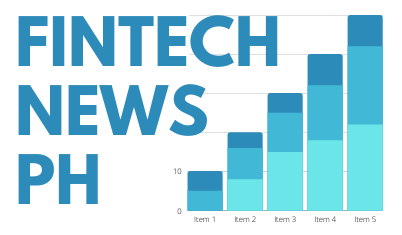The landscape of generative artificial intelligence is undergoing a seismic shift, and at the forefront of this revolution are AMD and Stability AI.

In a groundbreaking collaboration, the two tech powerhouses have joined forces to deliver a significant leap in performance and accessibility for AI-powered creative tools.
The result? Optimized models, meticulously engineered to supercharge inference speeds on compatible AMD Radeon graphics cards and Ryzen AI processors, now seamlessly integrated into the newly released Amuse* 3.0 Beta software by Tensorstack.AI.
Imagine generating stunning AI artwork, applying intricate photo filters, or even transforming videos with AI, all at unprecedented speeds.

This vision is now a reality, thanks to an engineering deep dive led by Hisham Chowdhury and his dedicated team: Xiaoxiao Liu, Sonbol Yazdanbakhsh, Lucas Neves, and Owen Zhang. Their work has culminated in specialized AI models, identifiable by the “_amdgpu” suffix on the popular developer platform Hugging Face, that squeeze every ounce of potential from the chipset maker’s cutting-edge hardware.
The tangible benefits of this collaboration are now within reach through Amuse 3.0, a beta software that acts as a gateway to a new era of AI-driven creativity. This release, which comes right on the heels of the chipset maker’s partnership with Rapt AI, isn’t just about raw power; it’s about democratizing access to sophisticated AI tools for artists, designers, and enthusiasts alike.
Amuse 3.0 offers photo AI filters, video diffusion, and a vast model library
To unlock this enhanced experience, users will need either the Adrenalin 24.30.31.05 AMD Optimized and Amuse 3.0 Preview Driver (available for download) or the upcoming Adrenalin 24.5.1 mainline release.

So, what exciting new features does Amuse 3.0 bring to the table? Beyond the game-changing AMD optimized models, users can explore a suite of innovative tools:
- High-quality photo AI filters: Leveraging advanced SDXL Lightning-based models and control nets, these filters allow for stunning image transformations, processed entirely locally for enhanced privacy.
- Draft-quality video diffusion: For the first time, users can experiment with applying AI styles to their videos, opening up new avenues for creative expression.
- Draft-quality video restyle: Reimagine your video content with AI-generated styles, offering a glimpse into the future of video editing.
- A vast library of models: Over 100 new image models and fine-tunes have been added, providing a comprehensive toolkit for diverse creative endeavors.
Amuse 3.0 empowers AMD users with compatible hardware to harness the power of state-of-the-art models like the Stable Diffusion 3.5 family from Stability AI and the innovative FLUX.1 models from Black Forest Labs. This curated selection, alongside a wealth of popular custom image models, positions Amuse 3.0 as a central hub for AI-powered creativity on AMD platforms.
The AMD advantage: Up to 4.3x faster AI performance

For users equipped with AMD Ryzen AI systems featuring the dedicated AMD XDNA NPU, the integration goes even deeper. The AMD XDNA Super Resolution feature enables the rapid creation of high-resolution, 4MP print-quality images in mere minutes, showcasing the dedicated AI processing capabilities of these chips.
The performance gains achieved through AMD optimized models within Amuse 3.0 are nothing short of remarkable. Depending on the specific hardware configuration, users can experience inference speedups of up to a staggering 4.3x.
For instance, on the powerful AMD Radeon RX 9070 XT, image generation in Stable Diffusion 1.5 can be up to 4.3 times faster, while SDXL 1.0 sees a performance boost of 3.1 times. Even with the latest SD 3.5 family of models, the AMD optimized models deliver up to 3.3 times faster performance on the Radeon RX 9070 XT when using SD 3.5 Large.
Unlocking new potential: AMD Ryzen AI gets a performance lift

The benefits extend to AMD Ryzen AI users as well. Those with the AMD Ryzen AI 9 HX 370 processor will witness speed improvements ranging from 5% to 50%, unlocking the ability to run larger, more complex models than previously possible. Notably, running demanding models like SD 3.5 Large Turbo becomes a reality thanks to these optimizations.
For enthusiasts with the high-end AMD Ryzen AI MAX+ 395 (codename: Strix Halo) series processors, the performance gains are even more significant, with up to a 3.3x speedup in the SD 3.5 family and impressive 70% and 40% faster performance in Stable Diffusion 1.5 and SDXL 1.0, respectively.
While the most significant speedups are observed on the latest high-end hardware, the chipset maker emphasizes that most modern AMD graphics cards and processors will experience noticeable improvements with these optimized models. However, performance will naturally vary based on the specific system configuration, architecture, and chosen models.
Beyond the raw power, Amuse 3.0 prioritizes user experience and privacy. The integration of local processing for Photo AI Filters directly addresses concerns about sharing personal images with cloud services. Now, users can explore the latest AI image trends with the peace of mind that their data remains secure on their own devices.
Similarly, the local processing of Video Diffusion and Video Restyle features ensures creative exploration without compromising privacy. The collaboration between the two tech powerhouses, brought to life through Amuse 3.0 by Tensorstack.AI, marks a pivotal moment in the evolution of generative AI.
By optimizing cutting-edge AI models for the chipset maker’s powerful hardware, they are not only delivering unprecedented performance but also democratizing access to advanced creative tools, empowering users to unleash their imagination like never before. As the digital creative landscape continues to evolve, this powerful partnership positions AMD users at the forefront of AI-driven innovation.
—
* Please note that Amuse is a Beta release and experimental software by a third-party. It is being provided on an “as is” basis. As such, there may be bugs and the user experience may be unstable or cause unintended behavior.

